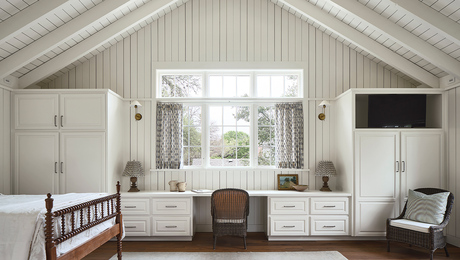Window flashing in furred out rainscreen wall
I am trying to figure out what the best practice is for window replacement in a rain screen wall. I am replacing windows and siding in a remodel. The siding will be James Hardie over a rainscreen created by using 1/2 inch furring strips. My question is should the windows be installed with nail flanges nailed to the sheathing, or should I furr the windows out 1/2 inch to match the furring strips for the rain screen? it would seem that attaching the windows to the existing sheathing is easier and does not cause issues with existing interior trim, but does this create problems on the exterior if the siding sticks out past the windows? I really wanted to run the siding into the window rather than picture frame heavy trim around them. Furring out the windows makes tying into the WRB more difficult but Peel and Stick flashing should make it workable.
My research seems to indicate nailing directly to the sheathing is the way to go, but why would furring them out not be just as good? I haven’t done windows in a long time. Are the new units made with deeper jambs to accomodate rainscreens?
I’m sure some of you that do a lot of siding and windows have very good opinions on this. Thanks in advance.



















Replies
You could do it either way as long as it is waterproofed properly behind the cladding. With rainscreen systems you always need to assume that the sheathing (or membrane on sheathing) behind the cladding can get wet and needs to drain downward - so the window opening and flashing needs to be detailed to accommodate this.
Going directly to the sheathing is easier because you would just flash the bottom pan of the opening, install the window and use peel-and-stick flashing over the flanges and you're done. With furring, you would need to make sure the flashing waterproofs the furring to the sheathing joint as well, which would require more flashing and work on every window. If it makes the exterior alignment easier it may be worth it, but the 1/2" size you have is not very much - you could likely make it up with a thin trim or angle around the window that the Hardie board can butt into if a wide trim is something you don't want. It's perfectly fine for the window to be recessed back a bit - it just requires a little more depth of trim.
If you haven't ordered the windows yet, you may be able to get deeper flange depths to accommodate the cladding thickness as well - but that might be a custom cost.
I'm a little late but I will put in my 2 cents.
I vote for putting 1/2" furring strips on top of wall cladding and then attach windows. I use a 3" wide piece of furring, I also prime the furring so it will grab the sealing tape. This will leave the full 1" of window casing available to catch the Hardy siding. If you put the furring over the window flange, you will only have 1/2" left to catch the siding.
I did 1/2 plywood furring on my siding (new lap siding over existing plywood T-111). I framed out the window openings with 1/2" plywood strips as well and attached the nailing flanges to that. It worked really well. This allowed me to cover the plywood edges with peel-and-stick over the furring into the openings. Since I went over existing plywood siding, I added building felt as my WRB, strips over that. Drip edge was a normal installation. House has been painted for 7 years (Oregon - wet) and it still look new - so there's no moisture issues.
I pulled out the old aluminum windows and put in new vinyl. This left about a 3/8" gap between the new frame and existing interior trim (painted white). I fabricated some 1/4" by 3/4" trim strips to cover the gap - caulked and painted, and they are basically invisible. I filled the gap with foam backer rod.
A couple of other points:
The house was built in 1977, so there was no seismic strapping. I added it between floors and up at the trusses. Since I have wood lap siding (light weight spruce), I put the furring next to the straps, which are nailed into the studs.
I extended the door frames, including the garage with 1/2" Doug Fir strips, then trim over that. Rather than trying to make them perfectly blend in, I added a 1/8" reveal and caulked them. They look like a trim feature.